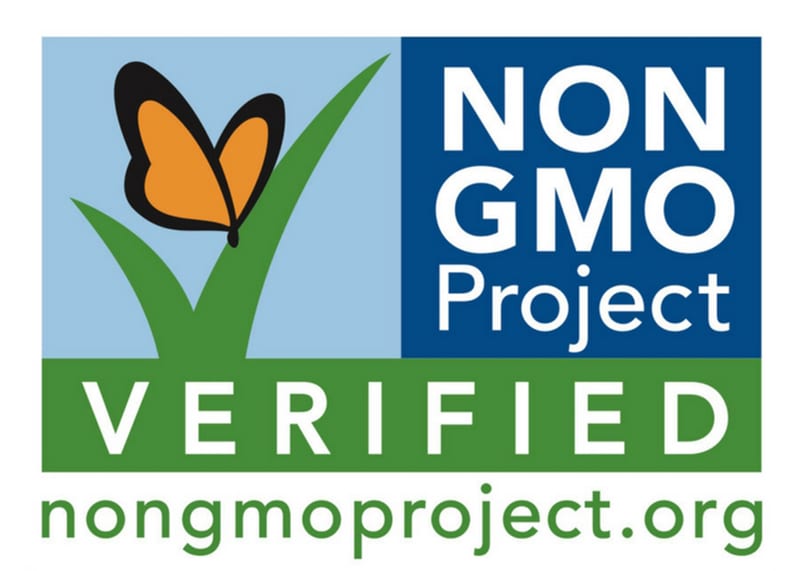Happy Non-GMO Month from the Non-GMO Project
by Alli Willis
This article was originally published in October 2018
Everyone has the right to know what is in their food.
The Non-GMO Project was founded on this simple principle more than a decade ago. In the years since, the organization has worked to preserve and build sources of non-GMO products, educate consumers, and provide verified non-GMO choices to ensure people in North America have the right to an informed choice about genetically engineered (GE) foods.
The Non-GMO Project was created in 2007 by two grocery stores: The Natural Grocery Company in Berkeley, California, and The Big Carrot Natural Food Market in Toronto, Ontario. Building upon the National Organic Program’s process-based standard for GMO avoidance, these retail and industry leaders established the Non-GMO Project with the goal of creating the first standardized definition for non-GMO products in the North American food industry and building a supply chain to increase availability and transparency of non-GMO products.
The Non-GMO Project develops the standard, while third-party technical administrators conduct the evaluations to verify products have met the standard. This process is backed by ingredient testing in accredited laboratories and strengthened by a surveillance testing program. It is the only third-party organization of its kind in North America, wholly independent and free of conflicts of interest. The Non-GMO Project Verified Seal has earned the highest possible ranking for meaningfulness from Consumer Reports.
Why the butterfly is important

This Non-GMO Month, it is especially important to be aware of new GE techniques and how they’re appearing in foods today.
Most people think of GMOs as transgenic crops — fruits, vegetables and grains engineered with combinations of plant, animal, bacteria and virus genes that cannot occur in nature or in traditional breeding. Nearly all these crops are engineered to produce a pesticide, absorb an herbicide, or both. Some are registered as functional pesticides, producing a pesticide in every cell, including the parts designed for eating.
In addition to crops, GE microbes have been used for decades to produce enzymes, yeast products, acids, vitamins and other processed inputs. These GMOs are not necessarily transgenic, meaning they don’t always contain genes from other
species. But they still are GMOs because they were created through genetic engineering.
New GE techniques, such as CRISPR, RNAi, ODM, gene drives (see sidebar for definitions) and other types of so-called “gene editing” generally do not contain foreign DNA in the finished product. But, regardless of whether foreign DNA is used, any process where nucleic acid is engineered in a laboratory is genetic engineering and the resulting products are GMOs.
For example, genetically engineered yeasts (fed a growth medium based on GMO corn or sugar beet) now are being used to create experimental products and proteins that developers claim are molecularly identical to vanilla, stevia, cow’s milk, and even human breast milk. The European Court of Justice recently ruled these products of genetic engineering are to be regulated and labeled as GMOs throughout the EU. Americans may not be afforded the same protections, depending on how USDA defines GE foods in the new national labeling law.
Unfortunately, the current draft of the National Bioengineered Food Disclosure Standard is deeply flawed. Although more than 80 percent of packaged consumer goods contain GE ingredients, ubiquitous processed inputs such as beet sugar and canola oil may be excluded from U.S. labeling requirements. Animal products certainly will be exempt from labeling, despite the fact that the majority of GE crop acres in the United States are used for animal feed. Non-GMO Project Verified is the only seal in the marketplace that requires ongoing testing of feed.
Celebrate your right to choose
GMO labeling must be clear, inclusive and meaningful in order to provide consumers the GMO transparency that we have been fighting for all these years. The Non-GMO Project will continue to work to ensure the incoming federal law is as meaningful as possible, while remaining the most trustworthy and accessible way for consumers to avoid GMOs.
Join the millions of shoppers and thousands of retailers this October as we stand united for meaningful GMO labeling. We are preserving and building our non-GMO food supply for future generations. Happy Non-GMO Month!
Genetic engineering techniques defined:
Clustered Regularly Interspaced Short Palindromic Repeats (CRISPR) – creates double-strand breaks or cuts in DNA.
RNA interference (RNAi) – a process whereby RNA molecules inhibit gene expression via translation blocking or degradation.
Oligonucleotide-directed mutagenesis (ODM) – involves the insertion of new DNA that mimics a portion of the plant’s genome and is incorporated via the cell’s own repair function.
Gene Drive – a mechanism whereby a particular gene or trait is favorably biased such that it always prevails and is passed down to future generations, overriding Mendel’s Law of Inheritance.
Developing GE foods to be aware of:
- Potatoes
- Apples
- Lab-grown “clean meat” and genetically engineered meat alternatives
- Dairy and egg proteins
- Flavorings, enzymes, citric acid, and processed food additives
- Dyes, lab-grown leathers, and many textiles
- Collagen
Alli Willis is the Non-GMO Project Communications Coordinator.
